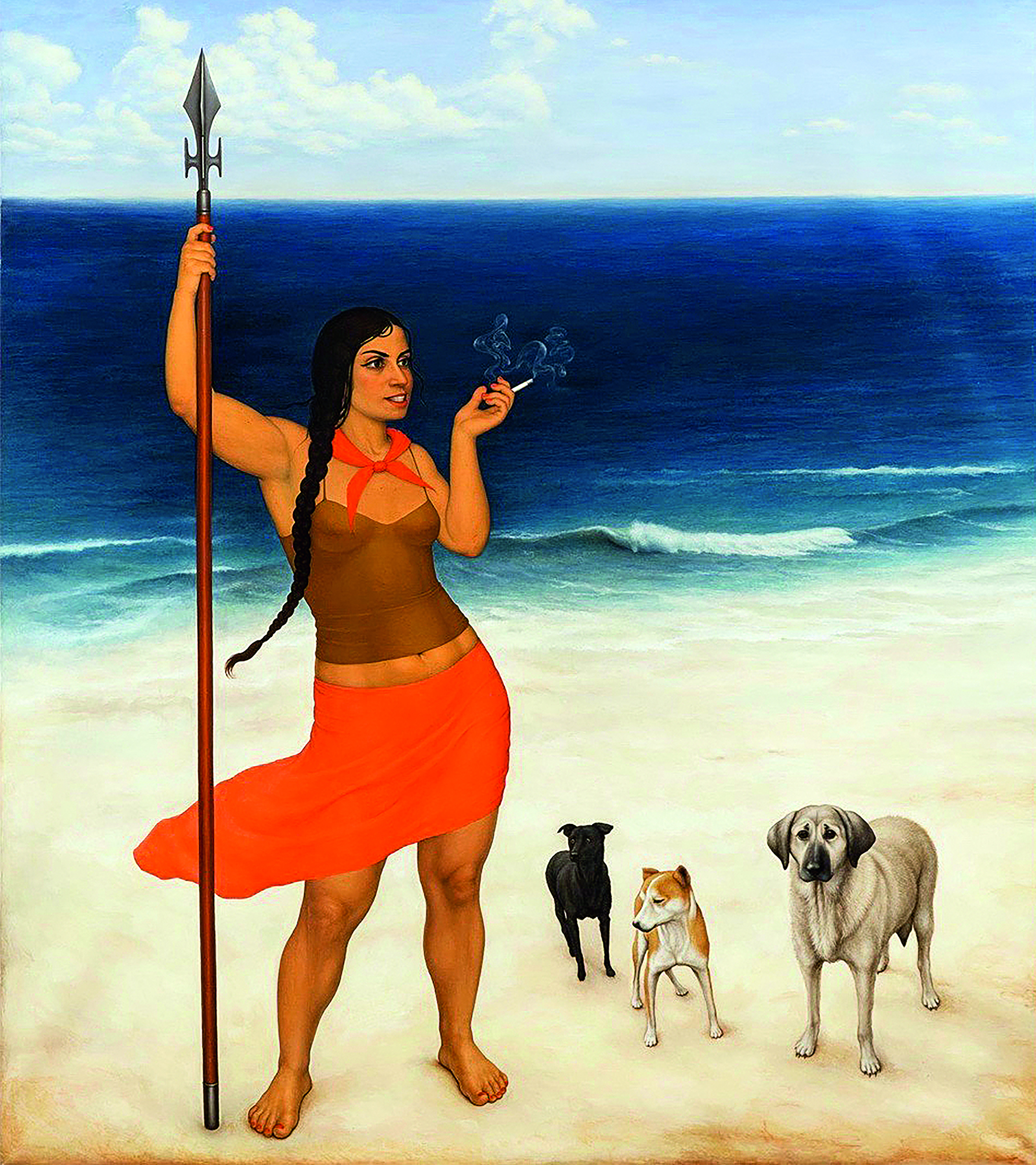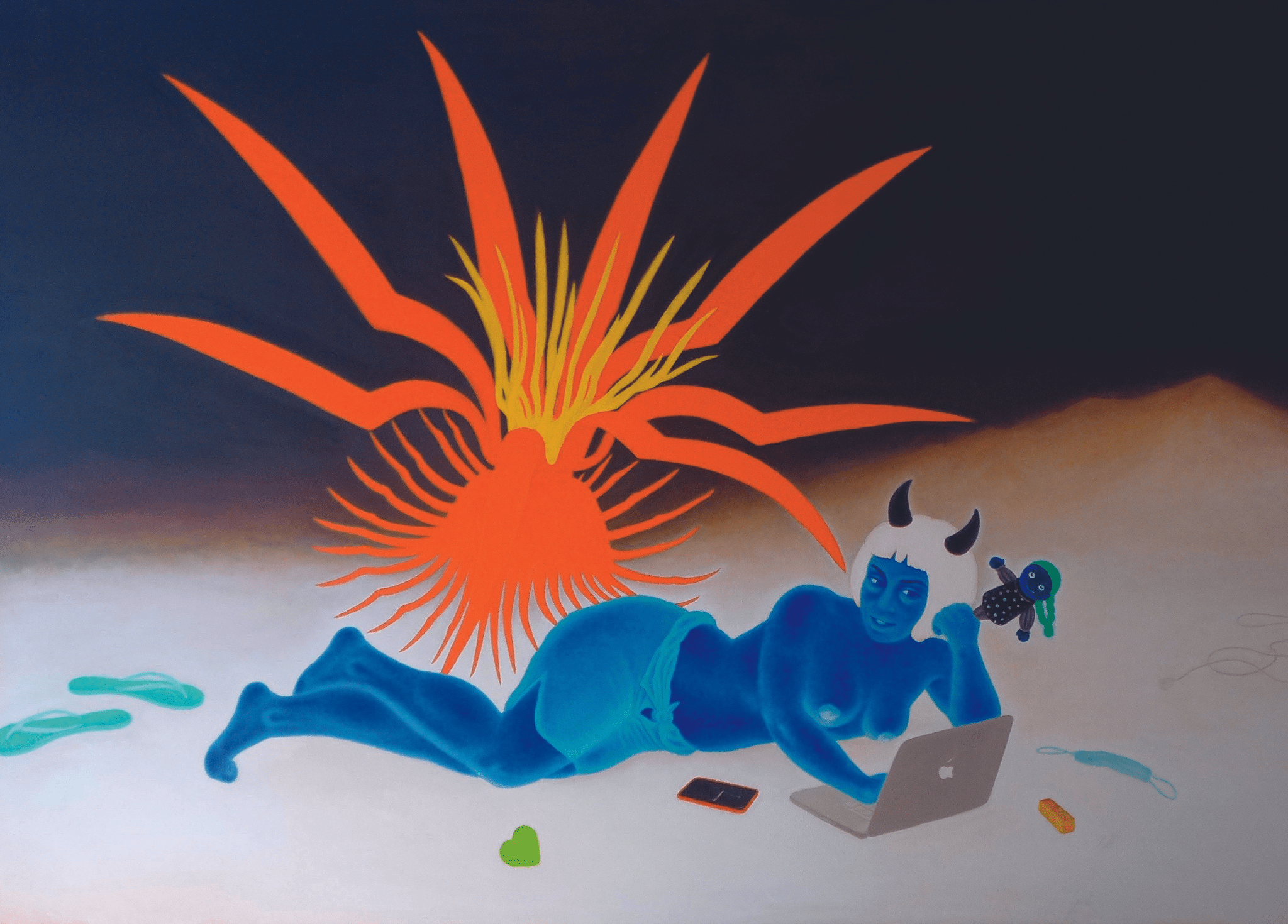
A cosmopolitan artist deeply rooted in her native land, Georgia, Eteri Chkadua’s investigation of womanhood has turned into a self-built mythology that populates her powerful, beautifully executed paintings. In a text about her project for Georgia’s Pavilion at the Venice Biennale in 2007, Lily Way described Eteri’s work as “magic feminism, an over-the-top, pop-oriented, fantastic foray into female role-playing and the uses of self as subject (…)”.
You are at the same time a Georgian and an artist of the world. How did your Georgian background shape the painter you are today?
I left my country, Georgia, at the age of 23, at the very beginning of the former Soviet Union’s breakdown. I arrived in the US and, subsequently, visited and lived in different countries. At the time – to my surprise – most people I met had no idea about Georgia’s existence. This, in addition to the nostalgia I felt for my homeland, increased my focus on the storytelling of Georgia’s traditions and its territories, occupied by neighbouring Russia. As a result, my paintings explore themes related to memory combined with folklore, myths, legends, traditions, the food of my native country’s ancient culture and its geopolitical problems. At the same time, I wanted my paintings to challenge my fellow citizens and suggest the possibility to abandon ancient values, which are useless to create a fresh and progressive society.
Almost without exception, your female characters carry a mysterious power within: they seem to embody the Amazon, the fearless woman that is ready to conquer, seduce and become empowered. Where would you locate the origins of the imagery in your paintings and the almost mythological universe you create?
I did not intentionally think of creating a strong female character in my art. I started painting myself as the female character as a way of processing the issues in my romantic relationships, the strong emotions and experiences I felt as an immigrant living far away from home, as a traveller “not belonging” to any place. The strong woman in my paintings reflects my personal existential unease, and that of those around me. It is true that I am also a product of my own disobedient nature. I became the “representative” of my nation abroad, the “visual storyteller”, whilst at once challenging its frozen traditions and its… macho culture. The strong woman is the embodiment of Georgia, relentlessly fighting off centuries of neighbouring invaders. She stands in accusation of presentday Russia engaged in occupying Georgian territories and pushing borders to its advantage.
During your career you collaborated several times with your brother, sculptor and designer Gocha Chkadua, and some of his works appear in your paintings. How did your collaboration influence your work?
The collaboration between my brother Gocha and I has happened organically, since we started sharing studio spaces 12 years ago. Gocha carves and paints otherworldly flowers using tossed-out plastic bottles. We share ideas in their construction and design. Our original intent was to create something of beauty out of this plastic garbage, with an ecological purpose in mind. In our proposed collaboration, these alien-shaped flowers and my paintings inhabit the installation space in a fictional garden – titled Alien Bloom – dragging viewers into a hallucinatory journey through our common pictorial history. The paintings created for this project, using images of these flowers, explore my thoughts and concerns, the issues that occupy my daily thoughts and for which I have no solution. The paintings find their place hanging in the meanders of this cosmic garden.
The pandemic has come with many challenges, but in your case, it brought an unexpected positive change with your move into a house in one of the most exclusive corners of Brooklyn, with a fascinating story. How has this space changed your life and current projects?
Upon my return from Vietnam back to New York, my Georgian friend, a collector of my works, offered me a space in the old mansion he had recently purchased in Bedford -Stuyvesant, Brooklyn, NY. The house was designed and built in 1887 by architect Montrose Morris for the Irish immigrant John Kelly. It hosted former president Grover Cleveland and scenes of one of Sharon Stone’s films were shot here. Currently Gocha and I live and have studios in this building. It is surrounded by a large garden. It allowed me to host wonderful performances by a group of sound artists. We have also had dinner parties and film screenings. Currently, I am working on a new painting series, The Blue Nomad, created during the lockdown. The paintings are my psychological travelog. Each painting has a diaristic quality that grapples with the personality disorders of my “uprooted”, nomadic lifestyle.































